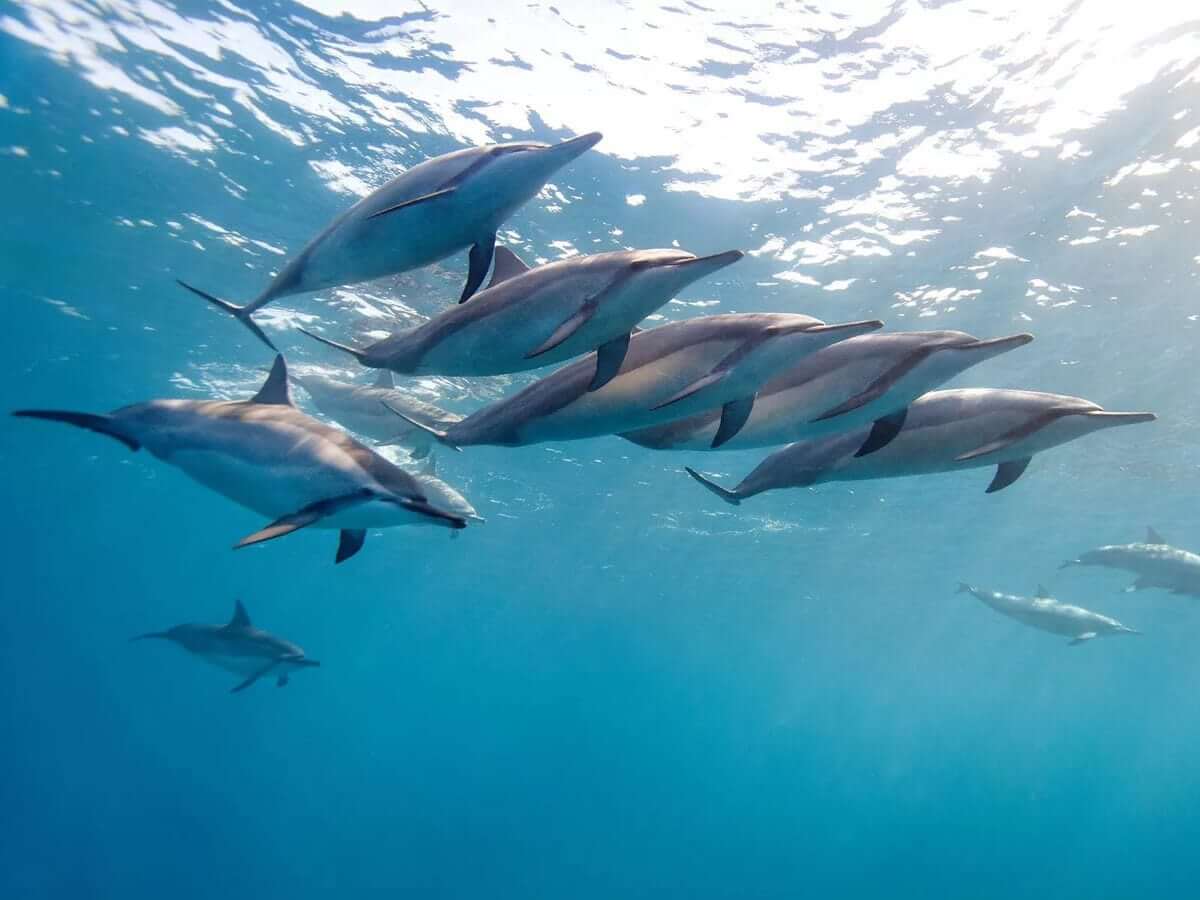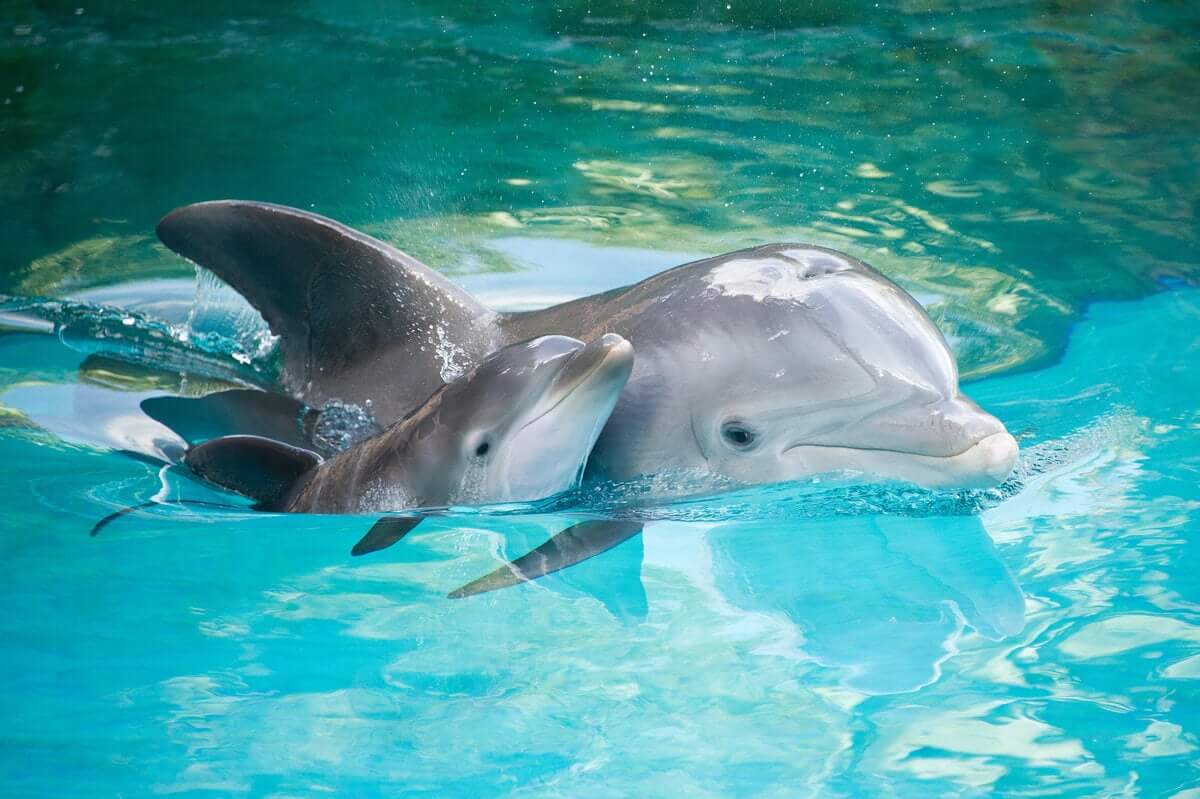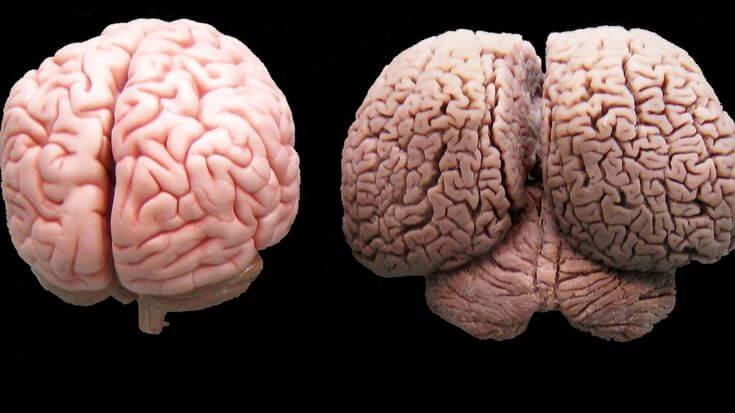Top 10 interesting facts about dolphins

Dolphins are mammals; they can be found in open seas and the mouths of rivers. They are perfect swimmers, as their body is adapted to move in the water. The body of a dolphin is from 2 to 3.6 m, and they weigh from 150 to 300 kg. They have pointed teeth; their number is a record-272, and in shape, they resemble pointed spikes. This is necessary to hold on to slippery prey.
Here are ten more interesting facts about dolphins for 4th-grade students to help you learn more about these mammals. Until now, the information we receive about them is surprising and unique because no animal living on our planet can compare with dolphins.
These are the top 10 interesting facts about dolphins.
1. The dolphin family includes about 40 species.

The dolphin family is a suborder of toothed whales, which includes about 40 species. There are 11 of them in our country. These include bottlenose dolphins, killer whales, whale dolphins, and many others.
2. Dolphin therapy is a method of psychotherapy.

Swimming with dolphins is helpful for those who have suffered severe psychological trauma. It helps you recover. Dolphin therapy treats cerebral palsy, childhood autism, Down syndrome, mental retardation, speech, and hearing disorders. It also helps to cope with depressive disorders if they are non-endogenous.
3. Dolphins only have 1 out of 2 brain hemispheres in slow-wave sleep.

Animals and humans can not stay awake for long; they are forced to fall asleep after some time. But dolphins are designed so that only half of their brain can sleep while the other half remains alert. If they did not have this feature, they could drown or become prey to predators.
4. Ancient coins have images of dolphins.

Since the 5th century BC, images of dolphins can be found on coins of ancient Greece and ceramics. In a cave in South Africa in 1969, a stone at least 2285 years old was found. There was a drawing of a man and four sea creatures resembling dolphins.
5. "Fighting" dolphins in the US and the USSR.

For the first time, the use of dolphins was proposed in the XIX century, but they were able to implement this idea only in the 1950s. The US Navy conducted many tests involving animals (more than 19 species). Dolphins and sea lions were selected. They were trained to find underwater mines and destroy submarines with a kamikaze. But the US Navy denies that they have ever done anything like this. Nevertheless, training bases exist, and they have an extraordinary Fleet of Marine Mammals.
The USSR established its research center near the Black Sea in 1965 in Sevastopol. In the early 1990s, dolphins were no longer trained for military purposes. But in 2012, Ukraine continued training, and in 2014, the Crimean war dolphins were taken into service by the Russian Navy.
6. The pregnancy of dolphins lasts 10-18 months.

Dolphins live about 20-30 years but have a more extended gestation than humans. They carry babies for 10-18 months. They can be born as small, up to 50-60 cm, or larger. When a dolphin is about to give birth, it moves, arching its tail and back. Other dolphins surround her in a tight ring, trying to help and protect her.
As soon as the baby is born, it is pushed up so that its lungs will spread out and it can breathe air. It can recognize its mother by its voice because immediately after giving birth, she whistles ten times more often than usual.
In the first few months, an adult dolphin does not move away from its baby; if it is hungry, it begins to cry, just like humans. All mammalian cubs sleep a lot in the first months after birth. But not the dolphins.
At first, the little dolphin does not know what sleep is; it begins to sleep only two months after birth. For the first year, the baby lives next to its mother, who feeds, educates, and punishes it if it does not obey. Then the mother starts teaching the baby how to get food and communicate. The dolphin grows in a female herd, and the male individuals live separately. One mother can have 7-8 cubs or only 2-3.
7. Grey's Paradox.

It is associated with dolphins. In the 1930s, James Gray found that dolphins move at a tremendous speed, at least 37 km/h. This surprised him because, according to the laws of hydrodynamics, they should have had muscle power 8-10 times more. Gray decided that these mammals control the streamlining of their bodies; their body has 8-10 times less hydrodynamic resistance.
In our country, research was conducted until 1973, and the first experiments appeared to confirm Gray's claims. Most likely, Gray was mistaken about the speed of movement of dolphins, but they still knew how to reduce the resistance to their training, but not by eight times, as the Englishman believed, but by two times.
8. Dolphins have a sound signal system.

Dolphins have their language. Psychoanalyst and neuroscientist John C. Lilly wrote about this in 1961. He said that these mammals have 60 essential signals. The researcher hoped that in 10-20 years, humanity could master this language and communicate with them.
They have the same number of sound organizations as humans, i.e., they compose sounds into syllables, words, phrases, paragraphs, etc. They have their sign language when they take different poses, give signs with their head and tail, and swim in different ways.
In addition, there is also a sound language. It consists of sound pulses and ultrasound, i.e., screeching, chirping, squeaking, roaring, etc. They have 32 types of whistles alone, each of which means something.
At the moment, 180 signs for communications have been detected. Now they are trying to organize them to create a dictionary. Scientists are sure that the dolphin emits at least 14 thousand sound signals, but we do not hear many of them because they are emitted at ultrasonic frequencies. Even though work was underway in this direction, it was impossible to decipher their language fully.
Everyone has their name, which is given to them at birth. This is a characteristic whistle, lasting 0.9 seconds. When the computer could calculate these names and they were scrolled next to several captured dolphins, a single individual responded to them.
9. A dolphin's brain weighs more than a human's and has more convolutions.

The weight of the dolphin's brain is 1700 g, while the brain of an ordinary person is no more than 1400 g. Researchers have found it striking for its size and complex structure. It has more nerve cells and convolutions than humans. They differ only in shape because it resembles a sphere, and we have a little flattened.
The associative area of the cerebral cortex is the same as in humans, which may indicate a developed intelligence. The parietal lobe is the same size as in humans. But a substantial visual part of the brain.
They can sympathize with others and can come to the rescue if necessary. So, in India, they are officially recognized as individuals, so dolphinariums that violate their rights are prohibited in the country.
10. The dolphin's name can be interpreted as a newborn baby.

The word "dolphin" comes from the Greek δελφίς, and it is from Indo-European, meaning "womb." Therefore, some experts translate it as a "newborn baby." This name could appear because the dolphin is somewhat similar to a child, or its cry resembles a baby's cry.





